If you want a successful online business these days, it’s not enough to simply close the sale. You’ve got to help your customers fall in love with your business.

It’s a great opportunity for an agile brand to outshine the competition and achieve ever-higher levels of success.
In fact, 81% of companies who provide great customer experiences and customer satisfaction do much better than their competitors, according to the 2009 “Customer Experience Maturity Monitor” report from the Peppers & Rogers Group.
Smart business owners know that every customer relationship lost, either to a competitor or otherwise, costs them an average of $289 each year.
And if you’re thinking you can just make up for that cost with new customers, think again. Turns out, it costs six to seven times more to acquire a new customer than it does to retain an existing one.
If you’re ready to help your customers fall in love with your business, then read on for ten ways to do just that.
1. Recognize the Value of Word of Mouth Marketing.
Great word of mouth (WOM) is a priceless asset for any small business, and word of mouth marketing (WOMM) is hands-down the most effective and reliable type of marketing.
You know how the things you pay a lot of attention to and value most of all tend to increase in value? I’ve found that principle applies just as much to business as to the rest of life.
In my experience, when I really focus on and value the things that positive word of mouth does for my brand — either this blog or any of the successful businesses I’ve co-founded — that word-of-mouth buzz tends to increase.
So what exactly is word of mouth? How does it increase customer loyalty? And what does it have to do with making your customers fall in love with you?
Ted Wright, WOMM pioneer and author of the book Fizz: Harness the Power of Word of Mouth Marketing to Drive Brand Growth, defines word of mouth marketing this way:
Identifying your influencers and coming up with a story that is interesting, relevant and authentic that ladders back to qualities of your brand and then sharing that story as much as possible.
WOMMA, the Word of Mouth Marketing Association, defines it as any business action that earns a customer recommendation. … WOMM is about harnessing the power of people to build brand awareness and loyal customers.
And make no mistake: WOMM is truly powerful. In fact, it’s more effective than any other kind of marketing, according to Nielsen, which found that 84% of consumers all over the world trust recommendations from friends and loved ones.
What’s more, according to the Wharton School of Business, a customer you acquire from WOM has a 16-25% higher lifetime value than those you acquire from other sources. WOM will bring in loyal customers and increase customer retention rate.
And when you add solid WOM to proven techniques to increase the value of your sales and carefully analyze what your competitors are doing right (and wrong), you’ve hit on a winning combination that the competition won’t be able to beat.
This is why you need to embrace WOM right now, place it in the center of your overall marketing strategy, and work hard to increase it.
How do you do that? Simple: make your customers fall in love with you. Happy and satisfied customers are much more likely to sing your brand’s praises to their family and friends, and will have a stronger brand loyalty.
Building a loyalty program designed to create raving fans is like drafting your best customers into a miniature marketing army — an army made up of devoted brand ambassadors who happily work around-the clock to get you more customers.
2. Start Before They’re Even Customers.
Helping your customers fall in love with you is a bit like a romantic seduction. The art of seduction requires careful planning.
There are three steps in particular that’ll help make your relationship with your customers as strong as possible before you’re even introduced.
Know who your ideal customers are – If you want to give your customers and prospects what they want most, you have to first find out what that is.
That’s why it’s important to start with a set of crystal clear profiles of your ideal prospects and customers. Ideal customer profiles help you get to know the basic demographics, fears, desires and needs of each segment of your market. This is essential to building a loyal customer base.
By creating detailed profiles for each of your ideal customer “types,” you’re laying the groundwork to more effectively target those who are a better natural fit for your brand.
Profiles will also help you filter out those who will become “problem clients.” This reduces the number of complaints you’ll ultimately have to deal with, and increase customer satisfaction.
Creating and attracting a loyal audience is much easier when you start by defining your ideal customers.
Your job is to understand the mind of your customers as thoroughly as possible and to deliver what they need and desire most in as seamless a way as possible. The more detailed and data-driven your customer profiles are, the more useful you’ll find them.
Qualify your leads – After you create profiles, you’ll want to put a system in place to qualify your leads.
What do I mean by that? Well, a qualified lead is one who’s really serious about their need for what you do or provide, and is ready to buy — perhaps not right this second, but soon.
Qualified leads are those that match your profile and have both the means and the motive to work with you or one of your competitors.
Basically, the process of qualifying leads helps you to identify which leads will still be there as loyal customers a year from now. Consider your customer engagement as a “long-term investment.”
If you’re a B2B business, then you want to make the health of your target business clients or customers a primary concern. After all, growing companies are likelier to grow with you and give you their repeat business.
If you’re B2C, on the other hand, you want people who are ready and intensely willing to solve the problem you address with your product and service.
In both cases, their successes will become yours and they’re much more likely to fall in love with your brand along the way, increasing customer retention and brand loyalty.
Design your customer’s experience – Once your qualified leads become customers, you want to make sure their experience is nothing short of delightful, to immediately start building customer loyalty. The only way to ensure this is to take steps now to design your customer’s journey strategically.
You may be wondering just what a customer journey is. Marketing consultant Kerry Bodine said,
It’s an illustration that shows all the different steps that your customers go through as they do business with you over time.
It’s usually visual, in some kind of a graphic format, and most marketers find it more helpful to create some kind of visual diagram of the process. A good example is the one below.
A customer journey map isn’t solely useful for website design or customer service, though. It should also guide your overall content marketing strategy as well as SEO. It’s one of the most useful exercises you can spend time on if you want to grow your business and your customer base and improve customer satisfaction.
According to E-Consultancy’s 2014 Cross Channel Marketing Report, only 2 in 5 companies “‘understand customer journeys and adapt the channel mix accordingly’.”
Another process that helps you maintain the right mix of “natural fit” customers is a periodic “80/20” analysis of your current customers and clients.
You’re probably familiar with various versions of the “80/20 rule,” aka “the Pareto Principle.”
In this context, it’s all about identifying the customers who might present potential problems and those that will deliver the best value for your business.
Every so often, it pays to re-evaluate your current roster of customers to check for potential problems, as well as significant opportunities to develop future brand ambassadors — i.e., those loyal customers who will gladly do your best marketing for you via word of mouth and “evangelism.” These customers will help building your customer loyalty program.
According to author Perry Marshall, who wrote 80/20 Sales & Marketing, the well-known 80/20 rule also applies to customers and revenues. In other words, 20% of your customers are responsible for 80% of your sales. This applies equally to large and small business.
It stands to reason that your customer relationship management should be focusing more on the customers in that 20% group is a wiser investment than putting the bulk of your energies and attention into wooing the other 80% who bring in a fraction of that in revenue.
Further, Marshall notes, another small segment — possibly 20% — is actually costing you, in terms of the time and energy you have to spend on mollifying and caring for them, more revenue than they provide. You should fire, or at least stop attempting to romance that 20%.
Don’t cling to those poor performing customers or clients who keep dragging you down and costing you more than you’re earning from them.
3. Manage Customer Expectations.
Far too many negative experiences with customers actually boil down to unmet expectations.
The customer expected something, but you didn’t deliver — perhaps the expectation never even occurred to you, or maybe outside factors you couldn’t control got in your way.
It happens to us all.
The good news is that you can fairly easily solve this problem to a large extent simply by managing expectations from the beginning.
Here’s how to do that:
First step: Find out what the customer expects as soon as possible. Talk to them, but most importantly, ask open-ended questions during your earliest conversations and listen to understand customer perception.
Open-ended questions are those that require something more than just a simple “yes” or “no” in response. Some examples of questions you could use for customer feedback in managing expectations are:
- Where does what I do/sell fit into your overall goals?
- What kinds of results do you expect?
- What else has to happen in your life or business in order to meet your goals?
- What’s your ideal timeframe?
And then? Listen to what they tell you, as this customer feedback will help improve customer life.
If speaking directly with your customers isn’t feasible, consider conducting a survey with the same kind of open-ended questions and ask your prospects and customers to respond. You might want to offer some kind of incentive — a discount or loyalty card for instance — to get more responses.
Second step: The key to managing expectations with a new customer or client is to be thorough and honest before purchase regarding all even moderately important terms.
Think “full disclosure,” keeping in mind that what’s important to them may not be important to you. So you want to approach this from your customer’s perspective to ensure customer satisfaction.
Another crucial technique is to under-promise and over-deliver.
It’s really tempting — especially for new small business owners/consultants — to expect too much of yourself and be highly motivated to “do whatever it takes” to close the sale.
But if you do that, you very well may end up not being able to finish on time or as promised and the customer will be disappointed.
So, instead, do the opposite. In other words, if you think you can deliver a finished product or service in two days, promise they’ll have it in four days.
Then if you do manage two days, they’re impressed! This can go a long way towards improving customer retention rates. But if something unexpected pops up — which it often does when you’re the boss, trust me — you’ve got a built-in safety net.
Third step: Communicate well and often with the client or customer.
Often a situation goes bad only because the customer doesn’t know what’s going on.
Remember, they can’t see behind the curtain. They don’t see you working for hours. They don’t understand what goes into delivering the product and service.
And they get more nervous as days tick by with no word from you.
From your end, things may be going perfectly — but the customer is growing more anxious every day. Then, when you finally deliver as promised, they’re not delighted. They can even be a little grumpy.
That means you’ll have to work extra-hard to keep their business and persuade them to come back again and again and the journey to help them fall in love with your brand and build customer loyalty will be much more difficult.
Do whatever you can to stay in touch with your customers. Communicate with them as promised and expected, especially for complaints or service questions.
4. Be Authentic in Customer Interactions.
You know, people are pretty sharp these days. They’ve been around the block a few times and they’re naturally skeptical.
This means that your customers are more sensitive to affectations and pretense than you might think. They can sense when they’re being “played,” and if they feel that way, and they’ll take their money and purchases elsewhere.
Have you heard of the “know/like/trust principle”? It’s the key to building a successful business, no matter what your niche or business model might be.
All things being equal people will do business with, and refer business to, those people they know, like, and trust.
– The Go-Giver by Bob Burg and John David Mann
It’s as true for B2B businesses as it is for B2C, because any business makes decisions through its employees or managers and they’ll naturally favor brands and businesses they’re familiar with and have brand loyalty towards.
For many reasons, trust is the most important part of that KLT formula. You can think of trust, in this context, as a pyramid, as depicted below:
First, your prospects become aware of you. Then, by communicating honestly, you help them understand you, which leads to their belief in your value, and, ultimately, they take action.
So how do you inspire your prospects and customers to like and trust you? By being authentic.
Copyblogger has several suggestions on ways to get your customers to like you and look what’s at the top of that list:
Being real and authentic is crucial to finding your voice as a blogger and content marketer, as well as improving customer engagement.
The blogosphere is growing by leaps and bounds and has been since the very beginning in 1997. Each day, hundreds of thousands — if not millions — of new blog posts are added.
If you want to stand out in that crowded marketplace of ideas, you have to bring something unique to the table. And in blogging, as in life, the one thing you have that literally no other person on the planet has is your authentic self (OK, and your fingerprints).
One place to start is by creating an authentic brand story as the foundation of your brand identity. Start by creating the “why” of your business — why do you do what you do? What’s your underlying passion and motivation?
Don’t be afraid to include the bad with the good. It’s tempting, when you’re creating content for marketing, to spin things positively so you look better to your prospects. That’s just human nature.
But the reality is that a well-crafted story of failure can actually connect you more deeply to your prospects and improve customer loyalty.
If you think about it, that just makes sense. After all, wouldn’t you feel better about your own chances for success if you knew that someone was once where you are now and managed to turn it around?
Remember that truth will win out, as they say, and it’s to your own business’s benefit to commit to authenticity from the start.
5. Treat the Customer Like Royalty.
Your business depends on how well and how consistently you put your customers’ needs at the forefront of everything you do.
If you doubt that, remember that bad customer experiences cost US businesses $41 billion a year.
82% of consumers report that they’ve left a company entirely due solely to a bad customer experience, which shows the importance of customer relationship management.
What’s scarier is that when they have a bad experience with a brand, 58% of consumers tell their friends about it — many of those on social media, where bad news does indeed travel at the speed of light.
And that’s how WOM can damage your brand’s reputation to the point of failure.
The best defense to a loud and angry customer is a speedy response time to complaints and questions. Almost half of all consumers around the world say that the time it takes a company to respond to an inquiry or complaint is a crucial part of the ideal customer experience.
The first rule of good social media customer service is to simply respond, as quickly as possible, to every single question or complaint you receive. You wouldn’t ignore the king or queen, would you?
It’s the same with your customers. Don’t ever fail to respond, because it’ll only get worse.
As much as really excellent customer service experiences go viral on occasion, accounts of bad customer service can do a lot of damage, even if they don’t go viral. This erodes the brand loyalty program, and damages customer retention rates.
it’s very difficult to come back from a truly significant screw-up. Just ask any of the brands involved in the top ten social media fails of 2014.
Another trick to treating your customers like kings and queens is to add value without raising cost wherever possible.
If you do need to charge more for a planned upgrade, then do some due diligence first. Before you add features or services, make sure that they’re wanted and priced appropriately — and give plenty of warning to existing loyal customers before prices go up.
6. Practice Active Listening and Follow Through.
It’s easier than ever to communicate with your customers, for example through social media or customer surveys, but it’s also never been more important to actively listen to them. Customer engagement will improve customer loyalty.
What is active listening? Here’s the definition Google prefers:
Customers are the lifeblood of any business. If you want your business to grow and stay healthy, you need to listen to whatever input your customers give you in their customer feedback. This will help improve your customer loyalty program.
Gathering feedback from your customers and leads has never been easier.
You can use any one of the following methods. Even better, use a combination of a few methods to make it as easy as possible for them to speak up and share their opinions with you:
- Surveys
- Focus Groups
- Observation
- Point of Sale
- Customer Service
- Social Media
- Communities and Groups
- Email and Web Forms
- CRM software
When they’re speaking — in whatever way — your job is to listen actively to them. You can’t simply give them an outlet and then disregard what they’re telling you.
First of all, ignoring customer feedback does you no good. You might as well save your time and energy. The whole point of seeking input from customers and prospects is to figure out how you can better deliver what they most desire, ultimately to improve customer satisfaction and service quality, and to increase customer retention rates.
More importantly, they’ll know you’re not listening to them and valuing their input when you don’t try to implement any of their suggestions. That will tell them that they don’t really mean much to you beyond a quick buck or two, and they’ll start to lose trust in you.
That’s no way to make your customers fall in love with your brand.
Being a good active listener means that you first and foremost pay attention to what you’re hearing. Instead of trying to formulate a response or figuring out how to convince them that they’re wrong, just focus on hearing what they’re saying first.
Second, don’t be afraid to dig deep — it’ll help you understand what they’re telling you more clearly and it it shows them you really do want to know what they think and value their opinions.
So ask questions to clarify their statements. Paraphrase their comments to them and ask them to agree or correct you — e.g.,
So if I’m understanding what you’re saying correctly, you value Feature A more than Feature B and you’d like to see more of that — is that right?
Finally, and perhaps most importantly, follow through on what you learn about your customer’s perception. You don’t have to change every single thing about your business, nor do you have to adopt every single recommendation from a customer.
Be open to change. If it makes sense for you to change something that several customers have commented on, you’ll earn their lifelong business if you make that change and give them credit for suggesting it.
After all, who doesn’t like being valued and appreciated?
7. Create a Scalable Support System.
Are you still handling all your customer service tasks by yourself with random calls and emails?
This kind of ad hoc customer service plan simply doesn’t scale. It might serve you well in the beginning when you’re not too busy. But your goal is bigger than that.
What you want is a business that’ll bring in so many customers that you can’t do it all yourself.
“Offering top-quality support is essential,” as Elegant Themes puts it. The #1 reason for losing customers is unsatisfactory customer service.
Whatever you can do to provide excellent support and service on a consistent and ongoing basis is a worthwhile investment. A high quality support service will help improve customer satisfaction and increase customer retention rates.
But you have to be smart about support. What works for your competition might not be the best choice for you.
Ideally, you want to adopt a system for support that you can scale — one that grows with you.
The ideal solution for your customer service needs is one that fits your budget, is easy for customers to use and fits into your overall business systems with a minimum of headache.
Not every CS solution works well for every type of business. For instance, Zendesk is a popular choice with tiered pricing and a free demo. It could be perfect for you. But it might be more than you need.
Help Scout is email-centered and helps create a more structured system. Other options include Desk.com, Zoho Support and Freshdesk.
Whatever choice you make should rest on the customer’s preferences.
If your customers are tech-savvy and somewhat younger, chat is often their preferred method of contact. According to the most recent Zendesk Customer Service Benchmark report, live chat provides a customer satisfaction rate of 92%, outperforming all other channels.
But older customers may find a chat-based system frustrating. They tend to rely less on web-based technologies and prefer phone support.
Either way, make sure your customer service reps (or you, if you’re shouldering it all) can communicate effectively with your customers, always taking into consideration generational differences in order to retain customers.
So speak (or write) clearly and not too quickly. Don’t overpower your customer with all the potentially relevant information. Answer the question as clearly as possible, and make sure you eliminate all jargon from your responses.
8. Treat a Customer Like a Valued Partner with Two-Way Communication.
What do you customers really want?
Like most people, they want a lot of different things — some of them may even be contradictory.
But you’ll never know if you don’t ask.
In everything you do that’s related to your business, you want to make sure your customers feel like valued partners.
The way to do this is to embrace a philosophy of two-way communication.
At its most basic level, this means that you make it a habit to ask for customer feedback and input and that you take the feedback you receive seriously.
It also means that you make changes where warranted and give credit where it’s due. This proves to your customers you truly value their input and opinions and will help in building customer loyalty.
If you raise prices — as we all have to, on occasion — make sure the increase is appropriate and justified and give as much advance notice as possible.
Alert customers to any significant changes, good or bad. Be clear and concise when explaining changes. This will ensure customer retention and maintain customer satisfaction.
It takes 12 positive service experiences to make up for 1 negative experience. Tread lightly when making changes to your products and services because your customers are used to what they’re already receiving and you do not want to damage customer loyalty.
Here’s an example: A few years ago, Instagram updated its terms of service with wording that was confusing to many. Lots of Instagram’s many users voiced significant concern on social media and in blog posts.
If Instagram didn’t respond quickly, it would grow to outrage — not just about the original issue but over the failure to respond to serious concerns promptly.
Fortunately, Instagram had already figured that out. The company quickly responded to the outrage and reversed its decision, in order to retain customer loyalty.
That’s a good cleanup effort, but they had to postpone or scrap the update as a result.
Had the situation been better handled from the start, perhaps through customer engagement or customer feedback, Instagram could’ve had a much better outcome without losing customer/user trust.
And once you lose a customer’s trust, it’s very hard to get it back.
I mentioned some of this above in the section about customer feedback and active listening. Here are some more tips that’ll help you improve two-way communication with your customers:
- Thoroughly research how your customers and the public will respond to planned changes.
- Be crystal clear when you communicate those changes.
- Tell your customers immediately when you’ve screwed up, as well as when you did something good.
- Find value in the customer feedback you do receive. Act on it. Acknowledge it.
9. Be Transparent.
If you want your customers to fall in love with your business, you have to commit to a certain degree of transparency.
Being transparent might sound a little like being authentic, which we covered before, but this is different.
Being authentic is about being yourself and being genuine.
Being transparent is about being forthcoming, ethical, and trustworthy.
Honesty is crucial in today’s overcrowded marketplace. Believe it or not, customers actually reward transparent large and small businesses — even when what that transparency reveals is less than positive.
Buffer App recently posted a stunning example of transparency. When was the last time you saw a social media tool, one designed to increase customer engagement and social traffic, admit publicly “our own social referral traffic has plummeted”?
But look at the comments, and you’ll see post after post praising Kevan and Buffer App for their transparency.
Sure, some of the comments have some honest criticism and suggestions — all of which is valuable and I’ll bet Kevan and the Buffer team are taking it all seriously.
But mostly, the users are impressed! This has clearly increased customer engagement and improved brand loyalty.
So what does it mean to be transparent in your business these days?
- You’re not afraid of customer feedback.
- You have nothing to hide.
- Your personal and work personas blur.
- You like to have conversations with your customers.
Note that transparency doesn’t mean you have to open your books to your customers and the curious eyes of the world (although you could).
Nor does it mean you disclose every single misstep and mistake — that would be boring, too.
Instead, you want to strike the right balance. Every business has some form of confidential information and it’s appropriate to maintain that confidentiality.
But, every once in awhile, consider opening the door and letting the light shine in the corners.
Your customers will love you for it.
10. Learn How to “Manage” Distraught People.
One of the least pleasant things you’ll have to deal with as a smart business owner is a very unhappy client or customer.
Don’t shirk responsibility for this part of the job and don’t let your fear of confrontation color the way you respond.
To help solve the problems future distraught customers can cause, create a customer service policy and loyalty program based on your brand’s core values.
Basically, you want to figure out, in advance, how you’re going to deal with unsatisfied customers.
Your plan should include action steps to be followed. If you’re consistent and fair in this process, you can turn even the most unhappy customers into your strongest advocates and loyal customers.
Specify what you’ll do to make things right for your customers in various situations. You probably already have some idea where things can go wrong in your business model.
Plan ahead to ensure service quality, so that when a customer complains about those things, you’ll be ready with the appropriate fix.
Don’t be afraid to go the extra mile. For instance, you can send a loyalty card or small discount after the problem is resolved.
Above all, listen well and offer empathy and compassion — not the fake “oh I’m so sorry you’re having a problem with that” kind of compassion, but an honest attempt to see things from the customer’s perspective.
Then you’ll be in a much better position to turn the situation around, both for the complaining customer and for your business.
If you can do that, you can make even the most hard-to-impress customers fall in love with your brand.
Conclusion
You’ll notice that nowhere in this article did I say “the customer is always right.”
There’s a reason for that. Sometimes, the customer is not only wrong, but has crossed a line. There’s no excuse for abusive behavior, for example.
Set clear boundaries for customer support. There’s no requirement that you have to accept being abused or harassed, and it goes without saying that you should never let employees be abused or harassed.
So, no, the customer is not always right.
The customer is, however, always human. Keeping that in mind can help you develop and communicate empathy, which can quickly pacify unhappy customers.
Be open, be honest and actively seek customer feedback. Be prepared to take action on customer feedback while jumping on customer issues as soon as you are aware that they exist.
Do this and your customers will fall in love with you.
How do you make customers fall in love with you?


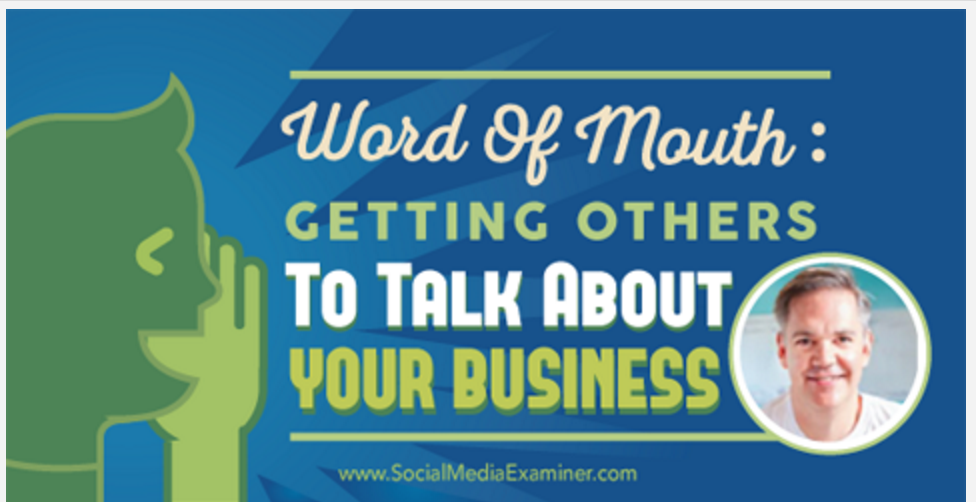
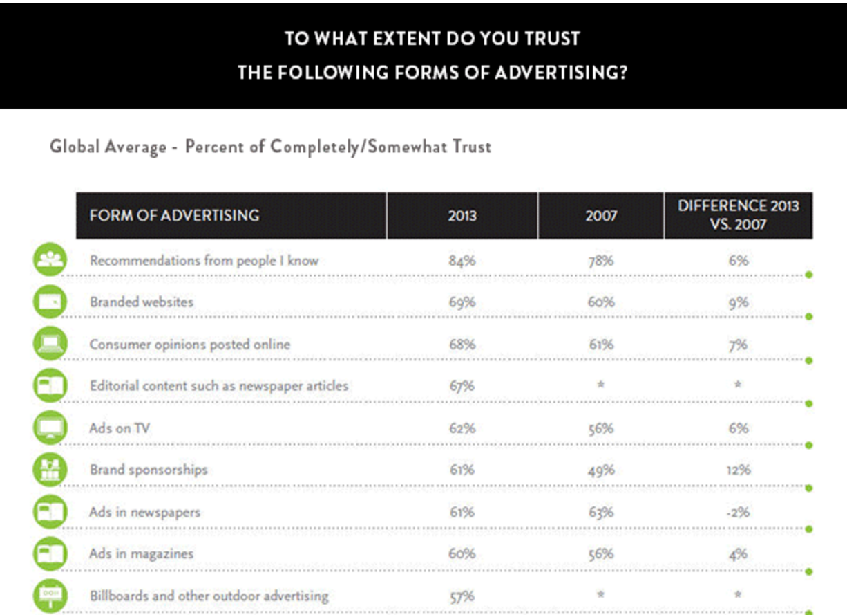
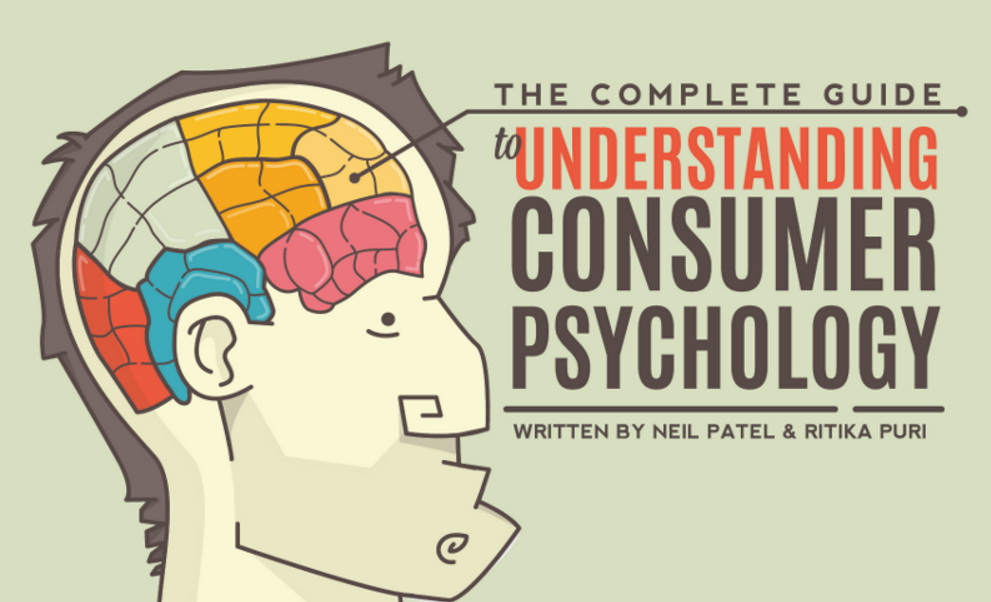


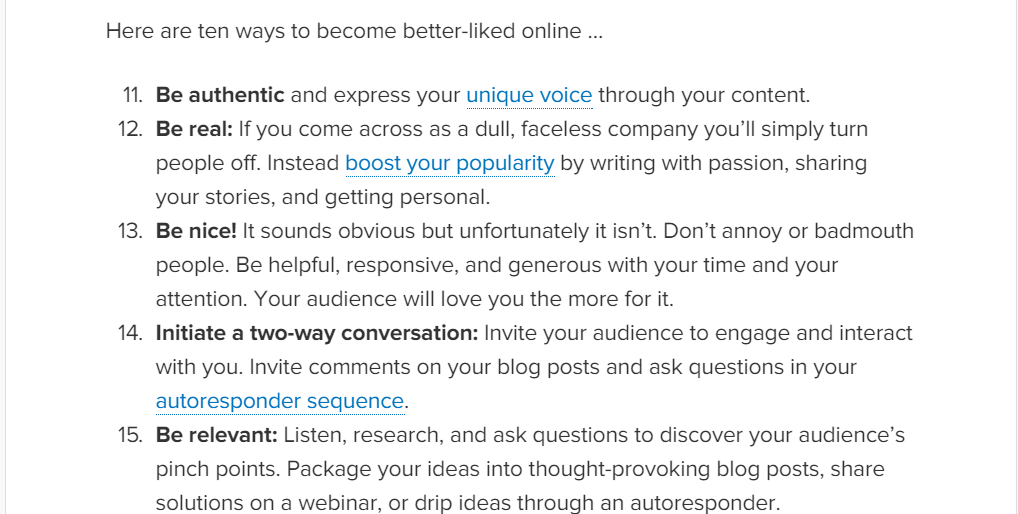
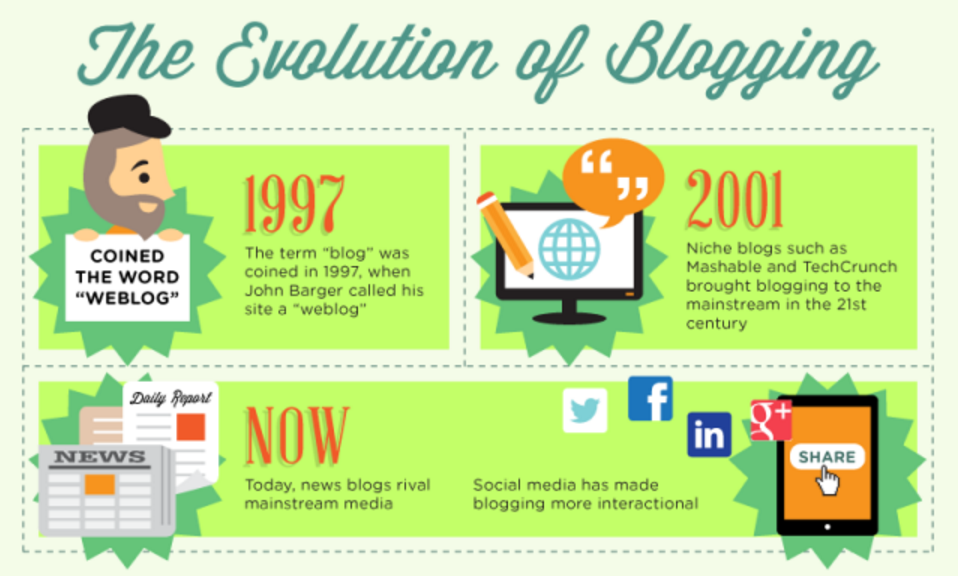
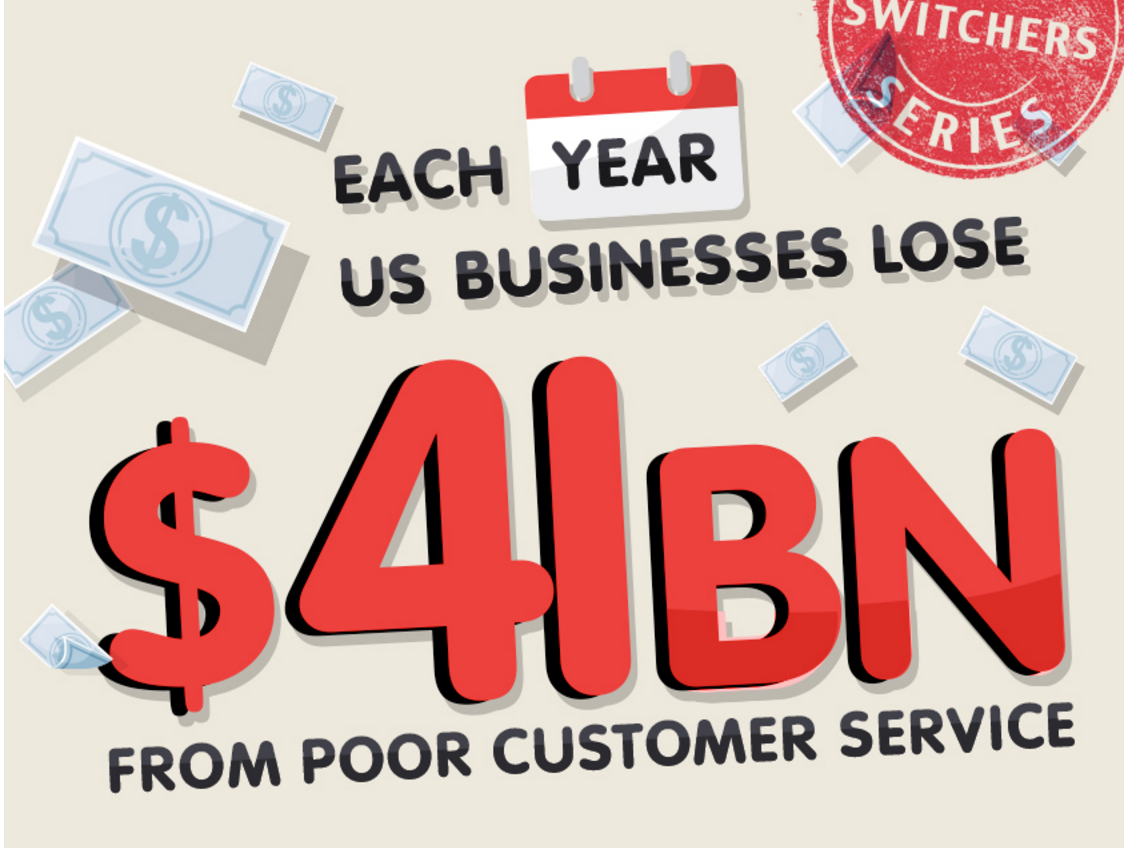
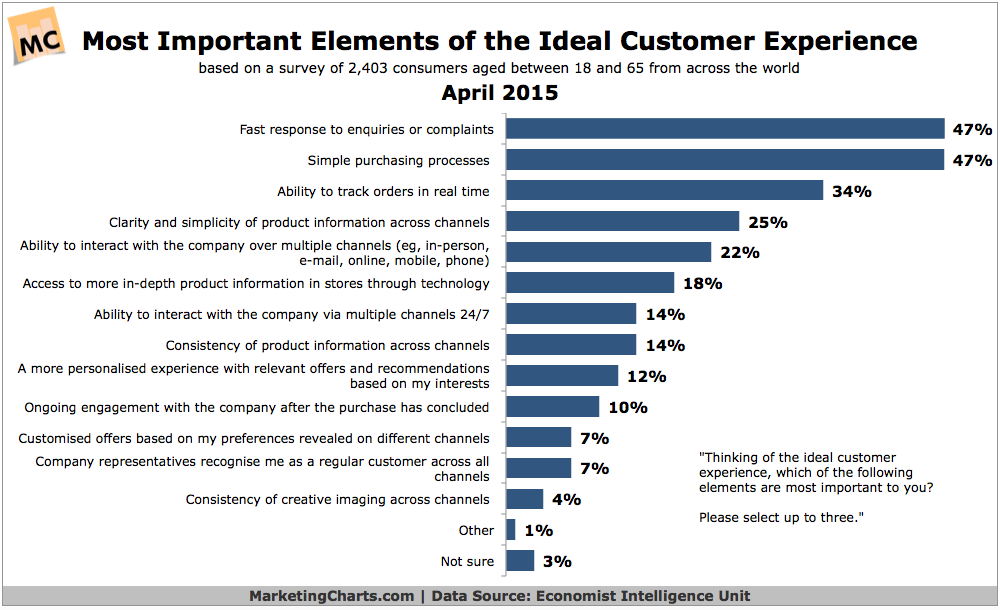
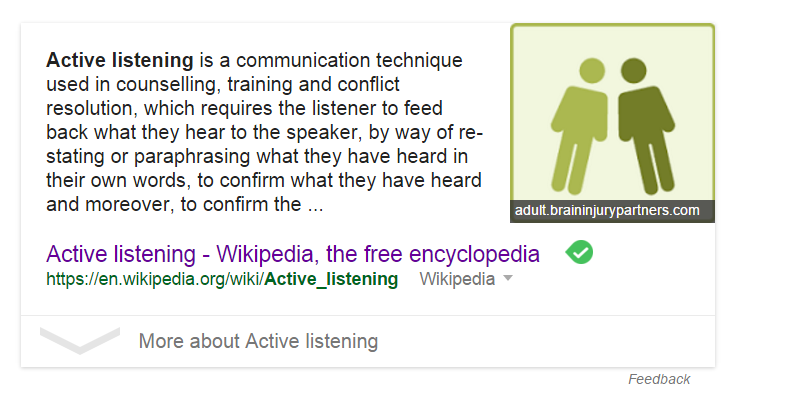


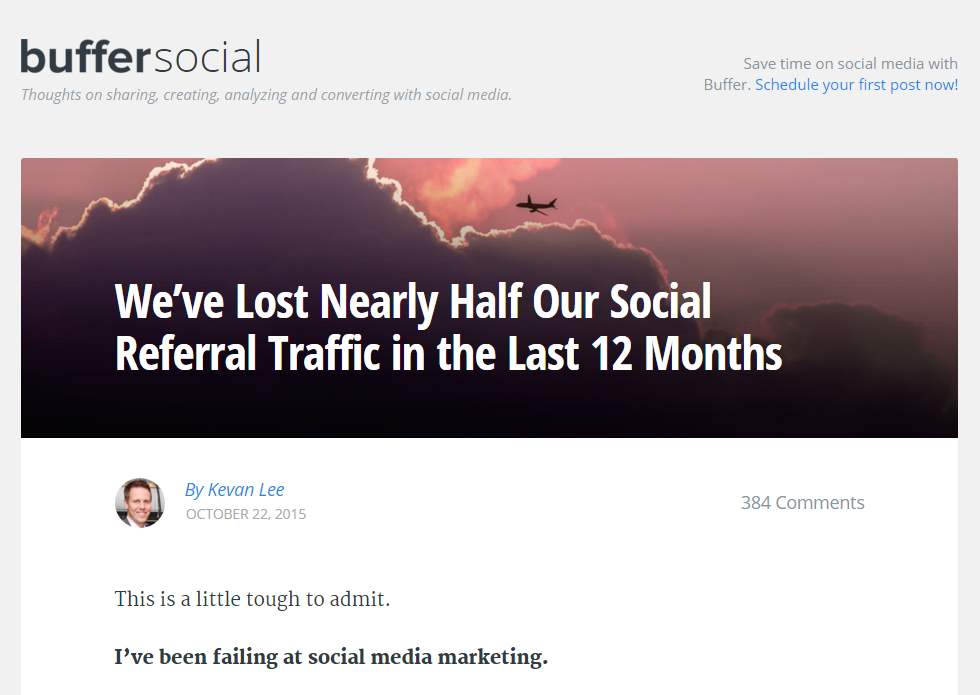
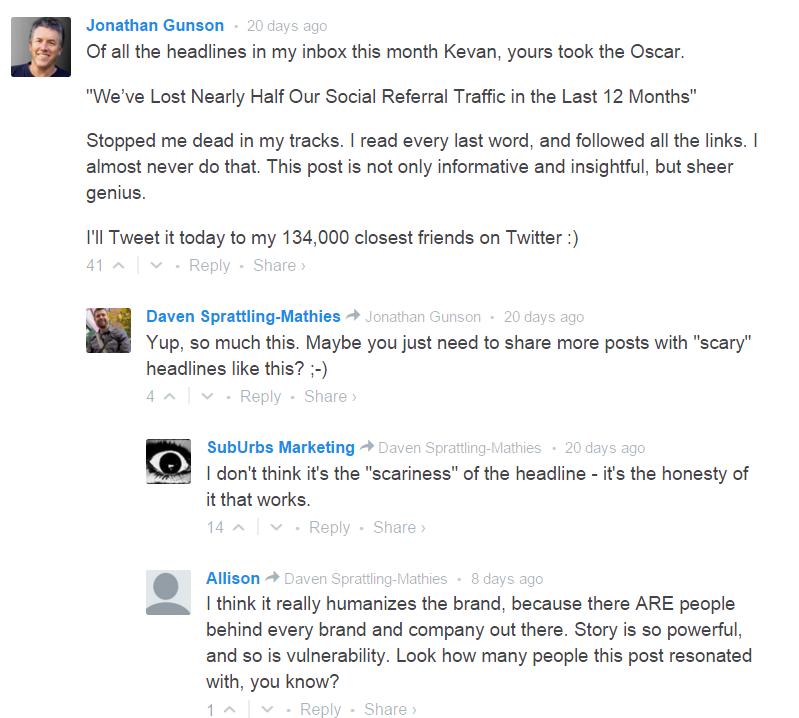
Comments (58)